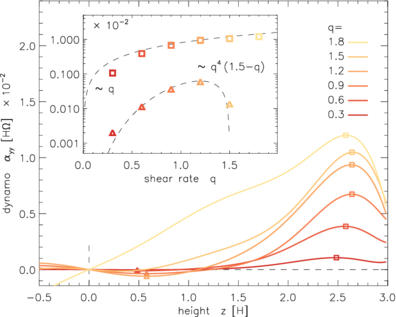DFF-FNU MOBILEX mobility grant
"Fundamental Physics of Protoplanetary Discs"
There are few concepts in physics that are equally fundamental as the conservation of angular momentum. One formidable consequence of this is the formation of gaseous accretion discs around a wide range of astrophysical objects (black holes, stars, gas-giant planets, active galactic nuclei). Such discs play a vital role in the formation process and evolution of nearly every type of object in the universe. Understanding the internal structure of accretion discs is the key to interpreting astronomical observations of these objects.
Project overview
The formation and evolution of a wide range of astrophysical objects is governed by gradual accumulation of mass through a surrounding, rotationally-supported cloud of gas. Interpreting observational signatures emanating from such accretion discs entails accurate modelling of the underlying physical processes. Yet models that go beyond a simple parametrisation have remained elusive for more than four decades. The aim of this project is to devise a new accretion disc model which properly subsumes our current knowledge about instabilities in magnetised rotating shear flows.

Dynamo α effect: The plot shows the shear-rate dependence of the governing dynamo effect that encapsulates how large-scale fields are amplified by the effect of rotating turbulence created by magnetic instabilities.
A key aspect in this endeavour is the role played by the disc's internal dynamo in setting the degree of magnetisation. Aided by state-of-the-art numerical simulations, the goal is to nurse an intuitive understanding of the disc “microphysics”. Such intuition can then inform the design of simplified models needed to study secular evolution.
related publications
- Gressel, O., Pessah, M. E. (2015), ApJ
810, 59:
“Characterizing the Mean-field Dynamo in Turbulent Accretion Disks”
First results
Using the test-field method, we establish the scale-dependence of the mean-field coefficients, describing non-local contributions to the turbulent electromotive force. We furthermore obtain scaling properties for the mean-field dynamo coefficients, which allow us to predict, in a quantitative manner, the cycle period of the butterfly diagram as a function of shear rate (paper in preparation).
Following a complementary route, we have also recently started to investigate the importance of additional non-ideal effects in the magnetohydrodynamics equations that lead to behaviour that departs significantly from that of previous studies. Exploring the consequences of such effects will be the subject of a future research project.
related publications
- Gressel, O., Turner, N. J., Nelson, R. P., McNally, C. P. (2015), ApJ 801, 84: “Global simulations of protoplanetary disks with ohmic resistivity and ambipolar diffusion”
 |
This project has received funding from the European Union’s Seventh Framework Programme for research, technological development and demonstration under grant agreement no 600207. |

